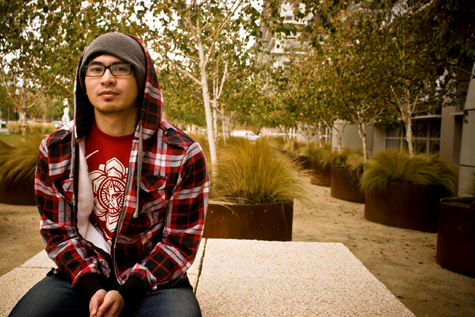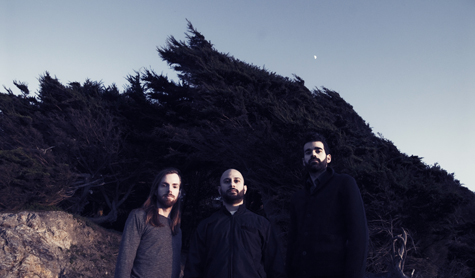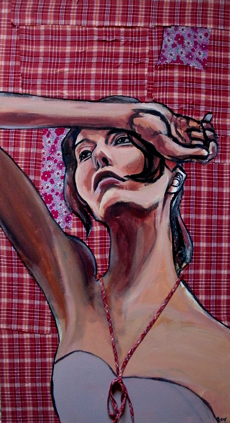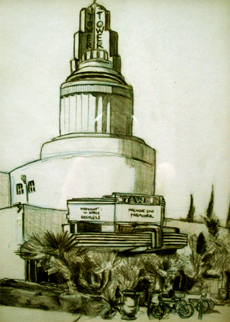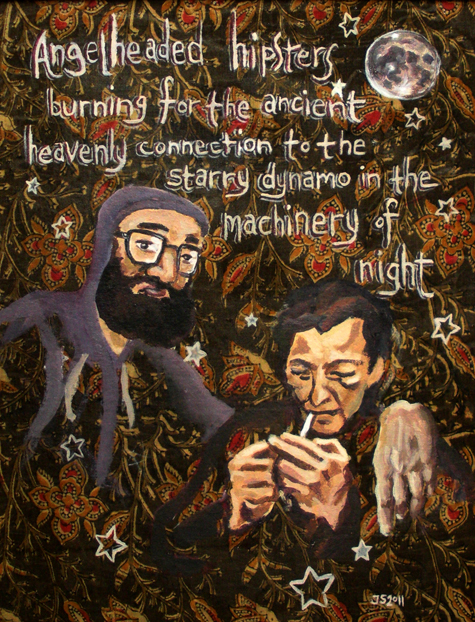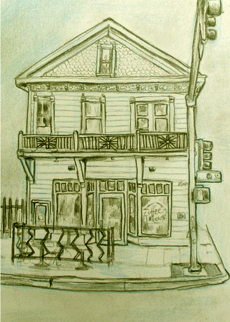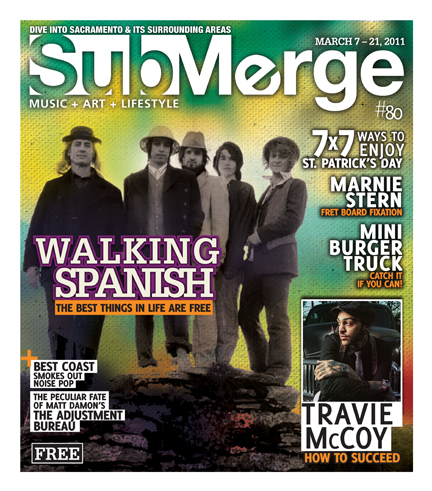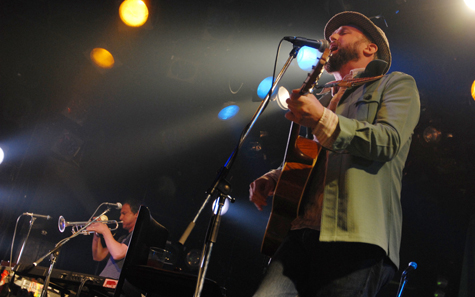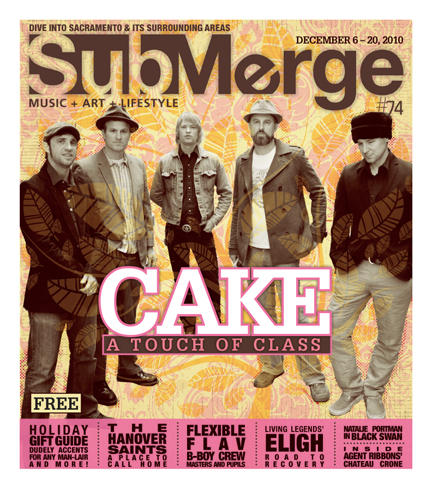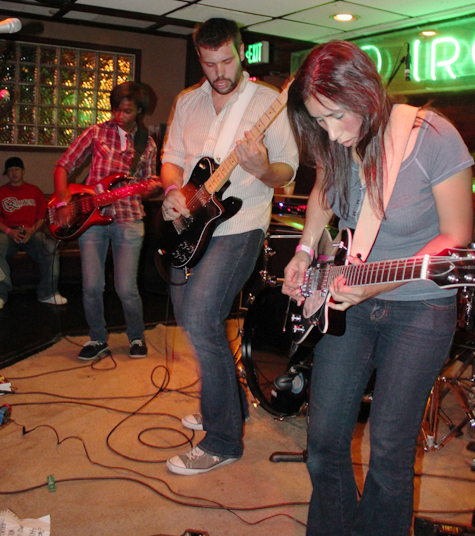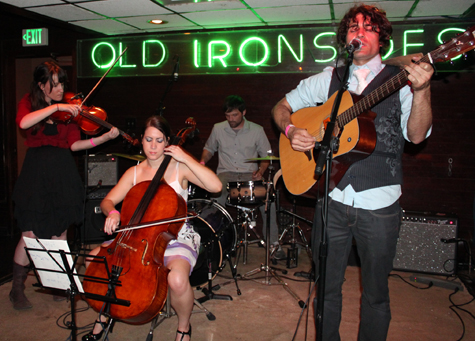Recently I was chatting with Nick Reinhart of Tera Melos when he suggested I check out a new band with some regional ties called E V Kain. Featuring past members of Hella, Cigar and Broken Bells, E V Kain is an experimental pop-rock trio made up of Jon Sortland (drums/vocals), Brian Belier (guitar/vocals) and Jonathan Hischke (bass). Their two songs posted online (Soundcloud.com/evkain), “Yes No Maybe” and “Sun’s Holiday,” are addicting echo-y pop-based tracks with interesting enough rhythms and changes to keep this easily bored math-rock nerd thoroughly entertained. Seriously people, E V Kain is really fucking good. Think The Police meets Faraquet, if that makes any sense. Dual vocal harmonies, precise guitar picking, complex (yet not overly so) drum rhythms and some of the most bad-ass bass lines I’ve heard in a long time. I’ve yet to see E V Kain live (although I’ve found some videos of them performing unreleased tracks on YouTube), but that will hopefully change soon as they are scheduled to play Old Ironsides on Friday, April 12, 2013 alongside Major Powers and the Lo-Fi Symphony and Ol’ Cotton Dreary. The show starts at 9 p.m. and is $5, 21-and-over only. We hope to have more E V Kain coverage here in the pages of Submerge as we learn more about their release schedule, so keep an eye out for that. You can also visit http://evkain.com/ for more information.
Tag Archives: Old Ironsides
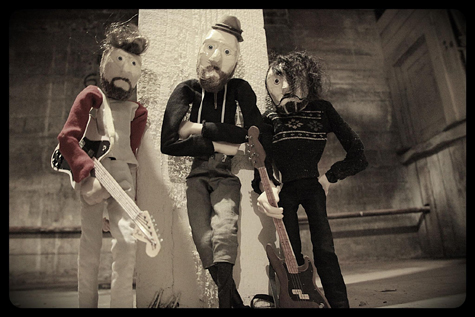
CHECK OUT E V KAIN AT OLD IRONSIDES ON APRIL 12, 2013
James Cavern’s Live CD Release at Old I – July 6, 2012
A lot of musicians try to create an organic live sound on their studio albums. But there is one local Sacramento artist who is going the extra mile to capture that true sound. On Friday, July 6 at Old Ironsides, James Cavern will record his live show and everyone present will receive a free copy of the freshly recorded tracks at the end of the night. He will record at least 15 tracks and play in three different musical styles that he has perfected over the years, including: a solo acoustic set, a two-piece electric guitar and drum set, and live hip-hop from The Ricky James Project. If that isn’t enough to get you out to the show, it will be hosted by comedian Carlos Rodriguez to add a little bit of humor to the live tracks. To add more spice to the night, Queen of Arts Tattoo and Piercing will be present to offer discounts on your next piercing or tattoo. Don’t miss out on a unique opportunity to be a part of a live recording with James Cavern at Old Ironsides (1901 10th Street, Sacramento) on Friday, July 6, 2012 at 8 p.m. Cover is just $8 at the door. Learn more about him at http://jamescavern.com/.
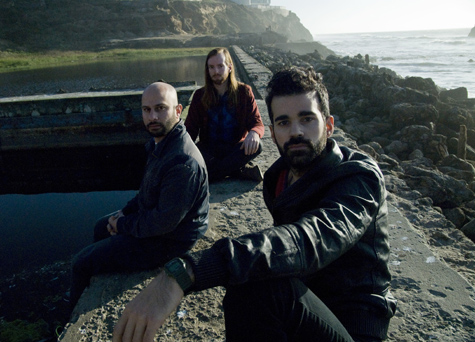
Found Objects
San Francisco’s Geographer finds inspiration in unlikely places
After taking a jog around Golden Gate Park in San Francisco, Mike Deni spotted something on the sidewalk that caught his eye. It was a unique looking synthesizer that was “basically a child’s toy” that sat in the middle of the sidewalk with no owner in sight. Most city folks would see this sidewalk instrument as a piece of trash; but after running by it, Deni performed a double take.
Hailing originally from the suburbs and fresh resident of San Francisco, he wasn’t sure if sidewalk items meant they were up for grabs.
“In the suburbs when you put something on the street, it’s still yours. You don’t put things on the street and then they are gone in seconds even if they are junk, like in the city. And that was a new concept to me,” Deni said with a big laugh over the phone. “So I grabbed it and still ran after I picked it up because I wasn’t sure. I didn’t know if I was stealing or helping trash collection.”
After becoming more accustomed to city living, he realized that he wasn’t stealing but might have done the synthesizer a favor by giving it a new home. He later wrote numerous songs on the sidewalk synth and is now the vocalist and guitarist for the indie-pop/rock band named Geographer. After living in San Francisco for a while, he met his two current band mates through a mutual friend (cellist Nathan Blaz and drummer Brian Ostreicher) to form what SPIN magazine calls, “One of the undiscovered bands you need to hear now.” Their most recent album, Myth, released in February 2012, contains 10 tracks that will make you lose yourself in the combination of Deni’s melodic vocals, drum hits from Ostreicher and the beautiful sounds of the cello from Blaz.
“We really like to make chains of sounds so that you can’t really latch on to any one sound and say, ‘Oh that’s the guitar, that’s the synthesizer,” Deni said. “You don’t know what’s even making the sound [and] then you are just listening to music. So I think you can get a little more lost in it.”
The trio has watched its success grow by touring nationally with hit bands Stars, Ladytron, Miniature Tigers and has also performed at Treasure Island Music Festival, Noise Pop and SxSW. SubMerge caught up with the Deni, while he was back in his home town of San Francisco to talk about his local music scene, the band’s most recent album Myth and the rush of music festivals.
What was it like starting off as an unknown band in San Francisco? Was there a lot of support at first or was it tough to get into the music scene?
It was pretty hard, actually. I’m not really good at selling myself. I really don’t like that at all. I would get nervous just to write an email to a booker. What you really got to do is you have to go to Pop Scene and talk to Aaron Axelsen at the DJ booth and [say], “Here’s my CD!” And I just cannot do that. It could be really discouraging, because you put out so much energy and then there were certain times where we would realize that we were spending twice as much time trying to promote ourselves and trying to get people to hear about our music than we were actually making music; that’s really frustrating. Sometimes you are lucky and people just latch on to you but it wasn’t like that with us, we really had to just keep trucking and try to find time to write music and try to convince people to get behind our music. There were some times that were really discouraging and I was like, “Why isn’t there any big band out there in San Francisco willing to help us out?” But eventually all of that stuff just happened, and we just had to be patient… And I feel like it really fell into place in really wonderful ways. The people who ended up helping us and getting behind us, they were real and true about it. But it was tough there for a little while.
But you guys are doing very well now. You played SxSW, Noise Pop and the Treasure Island Music Festival. How were playing those festivals?
Treasure Island was one of the greatest weekends of our lives. We’ve never been treated like that as artists. We had this heated tent, all of this food we could eat and awesome bands surrounding us. When we were playing, it was just so beautiful out and you could see San Francisco. I think that was the most people we’ve ever played to at that point. We played first for the festival, and we were thinking, “Shit, there are going to be 100 people tops,” but there were tons of people, and it was amazing. We just felt like we really had achieved something and that we had really been working hard for.
SxSW this year was pretty grueling, actually. It’s a lot of lifting, very little sleep and it’s just so frantic. Every show was jam-packed with people–and that’s awesome for the show–but mostly what you have to do at SxSW is move your gear around. But when you are on stage, it’s the best, because those crowds are amped. They waited in line around the block to see you, and the place is just packed and super sweaty. But then as soon as the show is over you have to work like a maniac to tear your stuff down and move it five blocks down the road and do it all again.
I didn’t see a single show and that’s honestly my favorite part about SxSW. The first year we went we barely played any shows, but we saw tons and tons of music. It was so inspiring. I came back and wrote my ass off because I was so inspired by it.
Do you have any rituals before you go on stage? Is there something you always have to do or carry with you?
When I’m on tour, I always hide in the van for 15 minutes before we go on stage, because there is really no alone time. When we are on bigger tours we get our own green room, so a lot of the times you have to share it with three other bands. I usually go into the van, drink a little tea and have a vocal warm up that I do. I just think about why I’m there and the purpose of all this driving around, lifting things and lack of sleep. It’s all for this moment that’s right about to come up. I get myself into a place where I forget about everything except the show I’m about to play.
How does your newest album Myth differ from your previous album Animal Shapes?
With Animal Shapes, we were really thinking about shows when we were writing and finishing the songs. Like “Original Sin,” we could picture the audience reaction to every moment of the song, and it was really important for us to create a big energy with that album. We’ve been starting to play a lot of shows, and we’ve seen what worked at shows. And I think we wanted to make songs that would put a lot of excitement out of the crowd. With Myth, we really concentrated on the recorded product. We didn’t think that much about how the shows would go, we thought more about how we wanted the songs to sound. That was the first album that had a real concentrated name that ran through all of the songs. So it’s a more complete idea as an album.
Geographer will play Old Ironsides in Sacramento on May 12, 2012. This show will be the Lipstick 12th anniversary party. For more info, go to http://www.theoldironsides.com/.
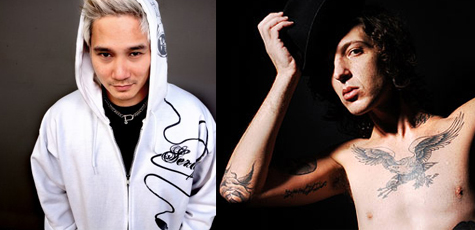
DJs and Live Music on New Year’s Eve!
Downtown Sacramento does not lack fun things to do on New Year’s Eve, that’s for sure. Allow this breakdown of NYE options to be a bit of a road map to your having an epic night. This surely isn’t everything happening in town, but here are a some great options nonetheless: District 30 (1022 K Street) has DJ Serafin (who is huge in the Los Angeles and Las Vegas club scenes) spinning his seamless integration of house, hip-hop, pop, Bmore and rock. Ace of Spades (1417 R Street) has Hollywood-based rapper Mickey Avalon with openers Big Chocolate and Richard the Rockstar. The Hyatt Regency Sacramento (1209 L Street) has an “Acoustic Lounge” with Quinn Hedges and Ryan Hernandez as well as a bigger/louder party inside their new L on 12 Nightclub with DJ Rated R and the super-fun cover band Cheeseballs. Speaking of cover bands, Shenanigans (705 J Street) has a huge party lined up featuring live music from Departure, a Journey tribute band, as well as 8 Track Massacre, an ‘80s cover band. Old Ironsides (1901 10th Street) has DJs Shaun Slaughter and Roger Carpio for a special NYE Lipstick party. The Blue Lamp (1400 Alhambra Boulevard.) has The Pine Box Boys, an Americana/bluegrass/experimental band from San Francisco along with three opening bands and Marilyn’s on K (908 K Street) has The Mother Hips. This list could easily go on and on, but we’ll spare you. For more NYE party options, click here for our calendar
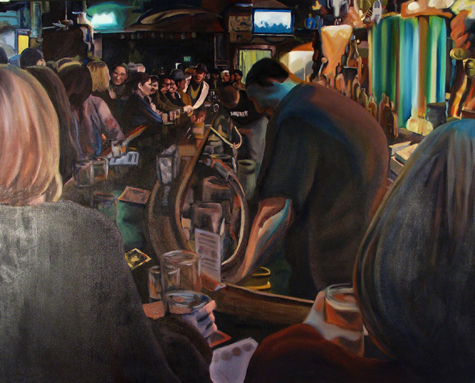
People and Places
Local Artist Jim Shepherd, Jr. puts his love of Sacramento locales on canvas
To a degree, relationships are a matter of how much time you can stand to spend with someone. With family, friends, acquaintances… Or paintings.
Sometimes, Jim Shepherd, Jr. finds his relationships consuming enormous chunks of his time, to the extent that his only moments away from it are to eat or use the bathroom.
One of these recent relationships was with a 4-by-6-foot painting of a scene inside Old Ironsides. He built the stretcher bars himself. The painting was done with oils rather than acrylics, a more arduous task.
“There was a day when I spent 15 hours just working on that monstrosity,” he recalls.
It was not unlike a relationship with a person, he adds, where it becomes a test of how much time you choose to spend around someone.
When he found it hard to break away from the painting, he knew his heart was in it.
“That’s awesome to me, when your heart is so connected to something you can’t part with it,” he says.
Shepherd is a local artist. Some of his more recent pieces will be in two different shows around town this month; one of which will have kicked off at Slice of Broadway this past Saturday by the time this issue is released. The other show will open on Nov. 18, 2011 at the Vox at Thinkhouse for their one-year anniversary.
For a while, Shepherd’s paintings focused on women. He would conceptualize the women and settings to paint them in. “I think it’s my hormones maybe, or just practicing [painting] the body, I guess. Who knows?”
He has integrated fabrics into some pieces, scavenging clothing in thrift stores and then cutting them up to glue onto canvases and paint over. A plaid fabric becomes the backdrop to a painted woman, for instance, and a piece of string rests around her neck.
After painting so many women, he is finally reaching a burnout point, he admits.
Nowadays he finds himself painting places he frequents. He will bike around town and snap photos of the places he then paints: Townhouse, Old Ironsides, B Street Theatre or Tower Theatre.
These are not concepts randomly pulled from the ether, he assures. This is a way he expresses love. Similar to his paintings, he has established a sort of relationship with these places, he says. Each location bears some kind of significance in his life.
This is how Old Ironsides, a place that has become a regular hangout for Shepherd, became subject matter for a painting.
Now he is working on painting the eerie two-story house at the corner of H and 21st, just down the street from Old Soul at Weatherstone. The fine details, the shingles of the house and whatnot, has made it another time-consuming piece.
Another common theme in his paintings is images accompanied by words, either lyrics from songs or quotes from books.
He pulls out a framed canvas from his backpack. The bottom layer is black floral fabric pasted down. Over it he painted bottles of alcohol and the words, “No, free spirits ain’t setting no one’s spirit free,” a quote from the song “Woo! Alright, Yeah… Uh Huh” by The Rapture.
“I’ve always liked the idea,” he says. “Even though you’re drinking doesn’t mean you are having a good time.”
This recently completed piece will be on display at Slice of Broadway.
Sometimes his intrigue with his surroundings is overwhelming, he says, to the point that he has trouble focusing on ideas.
Now he is exploring the idea of moving beyond painting pictures to “maybe start seeing the world around me in a sense and commenting on it, being a little bit more reflective.”
Another project he has begun to plan involves creating art that the blind can experience.
“Someone that paints like this, a blind person wouldn’t know what the hell this is,” he says, tapping on his painting.
The idea was born from the question: “How do blind people dream?” How do they see people or color in their dreams, he wondered. After pitching the question to a blind person, it evolved into another question: “How do blind people experience art?”
When it comes to visual art, “there’s this whole world that I can experience that they can’t,” Shepherd explains.
The project is still in the conceptualizing phase, but the pieces will be primarily based on touch, using different textures. Shepherd is looking for an ADA-compliant location to feature the exhibit and people to spearhead the project with him.
What is truly rewarding, he says, is the ability to emotionally move people with his art. Ideally, he would like to move strangers enough that they will want to buy his work.
Like many struggling artists, though painting is his passion, it is not his primary source of income.
“That would be fantastic if it was,” he says. He graduated from Sacramento State last year with a degree in art studio. Ideally he would like to continue school, possibly enter a master’s program. He could use the discipline, he says.
Money is an issue, though. Compared to other artists, Shepherd asks very little for his work, he says, making it difficult to sustain an income this way.
For now he works 40 hours a week, making enough to pay for his small apartment in Midtown.
It’s not the most ideal setup for an artist, and he finds himself often working with “shitty lighting.” Despite limited resources, though, he plans to create, come hell or high water.
“I think people need to kind of struggle a little bit to appreciate the good things,” he says. “And if good things happen to me, well, then I’ll damn well appreciate them.”
See Jim Shepherd, Jr.’s work now at Slice of Broadway, located at 2424 16th Street in Sacramento. More of his work will be on display later in the month starting Nov. 18, 2011 at Vox at Thinkhouse, located at 1818 R Street, also in Sacramento.
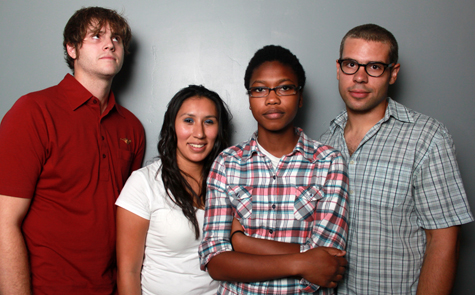
Who They Are
Der Spazm’s new EP is the culmination of a year’s worth of work
Never expect a band to be punctual.
“Hopefully everyone’s on time,” says Leticia Garcia, lead guitarist of experimental, indie rock quartet Der Spazm, the song “Electric Feel” by MGMT humming at a low volume within the confines of her gold Honda Accord. Bassist and backing vocalist Ashley Maiden rides shotgun; the two band mates chat about the latest Exquisite Corps show and the daily grind of their jobs. This casual, end-of-day gab kills time on the trek from Midtown to Sacramento Rehearsal Studios, where the band practices for their upcoming show at Old Ironsides celebrating the release of their six-song EP, 1000 Days.
Although Der Spazm have only solidified their lineup since May of last year, the band has performed on the steps of the Capitol in support of Sacramento Pride Week, admits they felt comfortable recording their EP in a former insane asylum in Stockton and have several colorful stories to share, like a Bay Area road trip gone terrible–involving barf, bands and a backseat passenger who unfortunately fell victim to said barf. From surviving car accidents together to supporting one another in the heat of Proposition 8, Der Spazm have grown into a tight-knit group of friends who just so happen to play in a band together.
Pulling up to the barbed wire-guarded practice space, Garcia presses a plastic cardkey to a black machine near the entrance, instantly cuing the gate to roll open and granting the two access.
“Never buy the box of 100 band aids at Grocery Outlet. That’s why I’m putting on three band aids right now,” says Maiden, sealing her injured finger.
Once inside, Der Spazm’s weekly routine begins. Drummer Andy Fisher sits behind his kit, idly jamming on his snare drum and high hat cymbals, completely encased behind the beats he creates. Maiden fidgets with her wounded finger and cheap band aids once more before plugging in her bass, and Garcia swings her Gretsch electronic guitar over her shoulder, the instrument appearing heavy on her petite frame.
Arranged orange and black chords, organized tools and guitar equipment hang to the right on one wall, while a U2 “The Best of 1980-1990” poster is tacked on another near the door of room No. 130. A stuffed tiger rests proudly above a PA speaker, its tail dangling down the side. The deep, sloth-like chug-chug of metal-inspired guitar chords erupts from various rooms lining the hallways of Sacramento Rehearsal Studios, whose bathroom still reeks of piss and 99 Cents store toilet cleaner. Back inside their practice space, a makeshift recording filter crafted from a simple wire hanger and an old pair of chocolate-colored panty hose lays abandoned atop a guitar amp.
“Sorry I’m late,” says Dillon Christensen (guitar, vocals), entering the room with the grace of Seinfeld’s Kramer. He sets down a massive, pastel-colored plaid board lined with every effects pedal imaginable: distortion, equalizer, digital delay, blues overdrive, memory toy, digital reverb and a handful of others. Each rectangular-shaped pedal is assigned to a certain spot upon his wooden platform, each holding the ability to immediately transform the sound of Christensen’s guitar with just the mere tap of a foot.
With every member now present, an impromptu jam session quickly begins. Garcia’s long brown locks sway to the momentum her body creates as her hand twitches up and down the fret board, fingers squeezing out euphonious melodies followed by Fisher, crashing in on drums, keeping up the momentum Garcia just developed. Stomping on his distortion pedal, Christensen adds a third layer to the mix, slightly changing the speed and volume of the song as Maiden, with eyes closed, seals the experimental rock base Der Spazm emanates with groovy bass lines and a James Brown swagger as her feet take on a path of their own dancing to the low, supporting sounds of her Fender Jaguar bass guitar.
“I could have had a shitty week and work is fucked, and I don’t want to be home and you feel like the world’s going to end, but then we get together; something about us playing, almost makes it feel like we’re not here, like we’re somewhere else,” says Christensen of the band’s chemistry.
Der Spazm started recording their 1000 Days EP in late November 2010 and now the release show is only weeks away. However, the location in which the band chose to record their EP was a bit strange in itself. On the weekends, the band would drive down to record at an old insane asylum in Stockton, later changing its tune as the Alan Short Center, according to Christensen, an institution for adults with developmental disabilities using the arts, like music, to heal.
“The environment really helped us to focus in and bang shit out,” says Christensen.
“Comfortable in an insane asylum, you know,” Maiden jokingly adds.
But what’s more insane is the wide array of incidents this band has endured in each other’s company. In January of last year, Christensen and Garcia survived a car accident on I and 18th streets. And though they are not to blame, Christensen does admit he was listening to Sonic Youth at the time and he thought I Street was not in fact, a one way street. Fortunately, both survived the accident, but the car ride adventures don’t stop there for members of Der Spazm.
“I went to see the Dodos with the Alcohol Plague in San Francisco. I was the designated driver. They got wasted and we were doing OK on the way home, but we get on the bridge and all of a sudden one of them barfs out the window and I’m laughing, and the guy in the backseat starts yelling, ‘It’s in my mouth,’” says Garcia, laughing at the memory.
Still, in times of misfortune, or in times of strange entertainment involving a little roadside spew, Der Spazm used it all to write track one on the 1000 Days EP called, “Happy Accidents.”
“It’s just about being content with how things are and realizing that things will happen, happy accidents will happen,” says Christensen.
But, while some songs are written from a place of laughter, others take a more political stance, like in their song “Sentinel,” written by Maiden in the heat of Proposition 8.
“I wrote ‘Sentinel’ about all the Prop. 8 stuff that was happening,” says Maiden. “Then, Prop. 8 passed and there were rallies all over the Capitol and California. The queer community just came together and it was amazing. And I was like, ‘Love is born in the heart of revolution.’ I think that was the best drunk line I ever came up with. It can apply to anything.”
Der Spazm may be the most diverse group of musicians when it comes to race, gender and even sexual orientation in Sacramento, consisting of two men and two women musicians, one of which happens to be a lead guitarist. Some work for the state, some are full-time students at Sacramento State, one works construction, while the other is watching the quality of our water and environment. But, regardless of who’s who, the members of Der Spazm collectively agree they just click and their year-long struggle to release a finished package of music has finally come to a close.
“We’re finally getting something out that we’re proud of. This is us. This is just a snapshot of our sound; it’s just who we are,” says Christensen.
Der Spazm will celebrate the release of their 1000 Days EP with Babs Johnson Gang and Mr. Loveless at Old Ironsides on Saturday, Sept. 24. The show starts at 9 p.m. and will cost just $5. 21-and-over only.
Front Roe Seat
Sacramento’s CUF returns strong with new album
Words by Adam Saake
On the first try to get Nate Curry, aka N8 the Gr8, of Sacramento’s legendary local hip-hop group the CUF on the phone for an interview with Submerge, he was tied up with some music business.
“I’m at Western Union wiring Gift of Gab some money right now for a verse. Can you call me back in five minutes?”
Curry is a busy man. Besides being one of five members of the CUF, he’s also a producer for up-and-coming R&B singer Marryann Hunter, hip-hop group Lost Tribe and his cousin, rapper MAK. His head has been immersed in those projects, and it wasn’t until recently that his focus turned once again to making music with the CUF.
“Truthfully, in the last year, we were kind of losing our motivation a little bit. I ventured off into some other stuff,” says Curry.
There’s no behind-the-music story, no band beef or silly drama. It’s just that the group has seen so many opportunities over the years come and go that delusions of grandeur were hardly taking shape.
“We’ve had so many different labels and so many different things that we’ve dealt with and it’s always just turned into shit. So none of us really expected anything,” explains Curry.
But the journey’s been a good one.
In 1993, a hugely important year in hip-hop that saw the release of such albums as Souls of Mischief’s 93 Til Infinity, Wu Tang’s 36 Chambers, Snoop Dogg’s Doggystyle, KRS-One’s Return of the Boom Bap and so many more (seriously, Google it), the young MCs known as the CUF were beginning what would become an 18-year-long musical career. Sacramento, sadly, was a lot like it is now in respects to clubs and music venues having little interest or tolerance for hip-hop or rap music. As Curry explains, there’s been no shortage of a few knuckleheads ruining it for us all with “plenty of people getting shot and killed at clubby club shows.” This was working against them, but a greater force was and has been ever-present; a strong Sacramento music community. Can’t book a hip-hop show? Well then play with a rock or a ska band.
“We got in with Filibuster, Steady-Ups, Diseptikons, Storytellers and those guys…and we’d get into venues that they’d have never let us play at,” recalls Curry.
These mix-and-match shows were part of one of the most active times in Sacramento’s local music scene. Venues like Old Ironsides, The Distillery, The Press Club and the original Capitol Garage all played host to the CUF, but now rarely if at all welcome hip-hop shows. Listeners who may have never stepped foot in a hip-hop club were now exposed to the sounds of the CUF playing alongside some of their other favorite groups. Well aware of this fact, Curry and fellow MCs Crush, Brotha RJ and Pete (Lil N8, aka Taktics, would come later) sharpened and fine-tuned their lyrics and beats to make sure their sound was clean and their voices be heard.
“We perfected our stage show because we knew that no one knew our music,” says Curry. “We made it to where we’d speak clear on the mic and the beats weren’t super cluttery and jumbled.”
Crowds were quickly won over; seeing the CUF on a bill without a single other hip-hop act was pretty commonplace. Plus, it didn’t hurt that the group had an anthem track appropriately titled “Sacramento” that listeners quickly memorized the lyrics to and would frequently request at live shows.
It wasn’t always difficult for hip-hop in the River City. There were all-ages venues throughout the years, most of which are no longer around, that were instrumental in keeping the scene alive and well. The Washington Neighborhood Center on 16th Street hosted frequent hip-hop shows, as did the now defunct and legendary venue Joe’s Style Shop. The upstairs art space and basement music venue on J Street was regularly throwing some of the most amazing shows that continued the theme of mixing and matching the artist community. Dub DJs like Wokstar opening for Filibuster with the CUF rounding out the bill was commonplace, and Sacramento was there in full effect, supporting the diversity and loving it. Later, Scratch 8 in Old Sacramento played host to such acts as Zion I, Crown City Rockers, The Grouch and many others. Again, the CUF was there laying down their signature sound and remaining an integral presence in the waxing and waning hip-hop scene of the late ‘90s and early ‘00s.
As other bands have throughout the years, the CUF also found homes for its hip-hop sound in other cities in the Bay Area and Southern California. A monthly club being thrown in Oakland called Unsigned Hype was a showcase for independent hip-hop talent making waves, as well as up-and-coming acts like the CUF. Bills would often include artists like Saafir of Hobo Junction or Souls of Mischief of Hieroglyphics. A fateful evening at the club paired the CUF and an unknown Mystik Journeymen from another large hip-hop group called the Living Legends as openers for A-Plus. The club that night was treated to impressive sets from both opening acts that left the crowd speechless–literally.
“It was weird because we put on an awesome show and everyone just stared and looked at us. I don’t think they were ready,” remembers Curry. “RJ and Sunspot [Jonz] chopped it up, we linked up and ended up going over to their loft and the rest was history.”
That history would include multiple tours with the Living Legends up and down the West Coast as well as guest appearances on each other’s albums. But even with the taste of scenes in other cities that had thriving hip-hop communities, the CUF could never leave Sacramento behind. It’s always been their identity.
“Sacramento is our home;” says Curry proudly. “That’s the reason our music sounds the way it does; it’s the reason that we are who we are.”
For residents of the 916 who aren’t familiar with the CUF, who over the past few years have kept a low profile, their chance to discover a hip-hop gem hasn’t passed. With a new album just released on April 26, 2011 titled CUF Caviar Vol. 1, the CUF is, to put it frankly, back and better than ever. A truly funky record with intelligent production from Curry, who has been responsible for 90 percent of the beats on CUF records, CUF Caviar is just plain fun to listen to. The album took two years to complete and the production value certainly shows patience. Songs like “Don’t Ask No ?’s” plays heavily with a punchy funk drum sample, a Ceelo-esque hook and auto tune vocals… It works, and frankly I wish the crap on the radio that employed similar techniques sounded half as good. CUF Caviar is a more refined, more polished version of what the group has been all along. It’s rare nowadays to find musicians who define a sound for themselves and are able to gracefully age and mature it without compromising the original ideas. The CUF has done just that.
“A lot of the stuff we did before was just us vibing out. We’d write a 16, the beat’s dope, let’s jump on it and find a hook and make it fat,” Curry explains. “[Now] it’s on a totally bigger scale.”
The title of the album, CUF Caviar, is the perfect reflection of this new “scale.” Curry says that when naming the album, the CUF wanted to stick with the fish theme that has always been their logo as well as the incorporation of the band name in the title. Past records have included CUF Daddy, CUF Baby and CUFilation as well as the earlier tapes Federal Expressions and Cuffish that are collectors’ items among diehard fans.
“We basically were thinking that caviar are fish eggs. They’re fish babies, but they’re more refined. It’s something that you’d want if you had an ear that’s more refined. It’s not no little kiddie hip-hop. It’s something for grown folks; sophisticated ears,” jokes Curry.
One of the more humorous things about the maturation of the CUF is the actual acronym itself. Commonly referred to as California Underground Funk or Californians Under Frustration, the guys have become family men now and a new meaning has come to pass: Cousins Uncles and Fathers.
The rejuvenated CUF will be taking CUF Caviar on the road, playing spot shows with Z-Man, Equipto and Mike Marshal. May 12 at Harlow’s will be the CD release show and Curry says that there may even be a Blackalicious and CUF tour on the horizon as well. If you’re not a CUF fan or if you’ve always been, make sure you cop the new album and hear what the fellas have been up to.
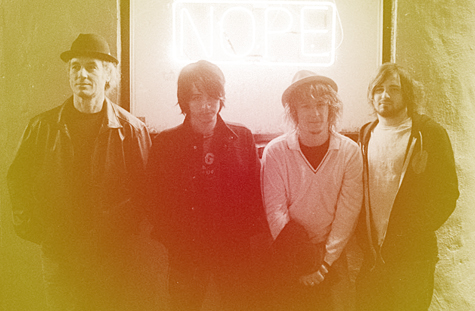
Them Bones
Walking Spanish’s sophomore album Wishbones strikes a balance
You could say Alex Nelson lives a scattered lifestyle. Somewhere in between picking up freshly pressed CDs, getting car steering fluid and heading to a wedding rehearsal dinner, the frontman of local band Walking Spanish found time to sit down over coffee and discuss the upcoming release of his band’s second album, Wishbones. It seems Nelson is ready to adapt to whatever situation is thrown his way. At his heel lay a backpack holding his computer, a change of clothes, cigarette coupons and a flask of bourbon, amongst other things. The first half of the following day would be spent as a groomsman in the wedding of a close friend, while the latter would be spent playing a show at Old Ironsides alongside Nicki Bluhm and the Gramblers.
Walking Spanish has become the centerpiece of Nelson’s life since he first formed the band with two friends in high school. Eventually he made it his own, writing all of the songs and assuming the role as band manager. The band’s evolution is apparent in Wishbones, he said. It is a versatile blend of well-structured songs, combining country, rock ‘n’ roll and pop, littered with subtly haunting, poetic verse.
After listening to the album, I met with him again outside Luigi’s Slice as he polished off a piece of pizza over the hood of his Honda just an hour before band practice.
Here is what the soon to be 23-year-old had to say about the new album, songwriting inspiration and maturing.
In terms of this record that’s coming out, how would you say it compares to the first record, or what should the fans expect? How do you think they’ll react?
I think they’re gonna go, “Whoa,” because it’s much different. I mean it’s still rock ‘n’ roll music but there is a lot more to this record. You’re listening to my songwriting and our band’s level of musicianship and our level of creativity. All those things, all those elements between this record and the first record, it’s, at least in my opinion, signs of maturing. To me, that means, just basically, that it’s better. [Laughs] To me, that just means that I’ll listen to a song and just be like, “Aw man. That’s a way better song than what I would’ve written when I was 18.”
Can you tell me a little bit about the song “Counterfeit Wishbones?” What inspired it?
I can tell you the emotion that arises from me is the feeling of being caged, and the idea of the “Counterfeit Wishbones,” you had chances to get out of the cage, but they were just counterfeit. When I was teaching this song to the band, I said I want this to sound like a tiger trying to get out of a cage. So I guess that’s kind of the theme of that one. As far as the lyrics go, the lyrics were inspired by, well, I’m not really sure. You’d have to dig really deep into my psyche to find out where those came from.
So why did you title the album after it?
I thought it would be kinda cool. I thought Wishbones sounded cool. Every song I write is like a piece of my mind, and if I’m putting out my words and my ideas out into the world, it’s almost like a wish. So Wishbones is kind of a neat voodoo thing that kind of has that whole theme attached to it. But it’s also like wishbones, there’s a winner and a loser. Which is kind of the way I look at the world, everything that’s good has its counterpart somewhere in the world, whether it’s directly related or not. There’s balance to everything.
So was there an inspiration for the song “Jacksin?”
Yeah. It’s kind of the same way that it’s fun to play video games where you shoot people, because you don’t really get to do it in real life. It’s kind of the same way I like to write a song. I wanted to get into the place to tell a story about an experience that I’ve never experienced and an experience that I don’t ever hope to experience, but by singing about it and trying to write from the standpoint of somebody who’s like that, and went through that kind of a situation, it’s almost like I was able to live it in that way. I mean, it’s obviously fictional, it’s just a story. A story that I think is a realistic story, because those things happen.
Where’d you get all the music influences?
Listening to it growing up. Growing up.
But I mean, parents? Or…
Oh yeah, well I had a good kick start, coming from a family that listens to a lot of music. So, my parents were divorced since I was 8. So I lived with my mom, and my mom had a good record collection. But even more so did my two older brothers that had record collections that were even more varying. My oldest brother had all kinds of old records from all different time periods. He had phonograph records, and CDs and tapes, and all kinds of collections of music stuff. And then my brother Brian, he had White Zombie records, Rage Against the Machine. And I got really into those bands, too.
So, speaking of brothers, your oldest brother is Jackie, Jackie Greene. So it looks like when you did this album, you were in his recording studio, right?
Right. Well, it’s Tim Bluhm of the Mother Hips. It’s his space. Jackie used it, though.
How is it working with your brother?
Working with my brother? You know, the funny thing is, that’s probably the most relevant question that anybody could ask when they’re asking about Walking Spanish and they’re pertaining to Jackie Greene. Nobody ever asks me how it is working with my brother. Everybody always asks, “Have you ever played with your brother?” Or whatever, things like that. It’s funny you asked that question.
It’s great, it’s wonderful. I imagine working with somebody who doesn’t understand me and what I’m trying to do as well as my brother wouldn’t be as easy. Because I can come up with an idea, and I only have to explain about a quarter of it and he’ll be like, “Oh yeah, I get where you’re going with that.”
Do you have any free time?
[Laughs] Yeah, sometimes. No, I do, that’s not fair. I have friends who work two jobs and go to school, and I have a lot of free time compared to them, because everything I’m doing is what I want to do. So it’s almost all free time.
And that’s the band?
Yeah. Everything I do is for that pretty much and that’s my job. So that’s what I do all day, that’s what I do all night. And during my free time I’m probably playing music anyways, or playing in another friend’s band. Or playing baseball with my brother for exercise in batting cages. Yeah. Playing with my dog. Reading books. Going to bachelor parties.
Walking Spanish will celebrate the release of its second album at Old Ironsides on March 25. Prieta will also perform. It will be $7 to get in, and the show starts at 9 p.m.
An Arbor of Love
Cake’s Showroom of Compassion feels for you
Words by Adam Saake | Photo by Robert Knight
Longevity in the music industry has long been an admirable quality when we discuss a band and their merits. Not every musician can be Bob Dylan and few bands can be The Rolling Stones, who just won’t seem to go away. Flashes in the pan are the vast majority and that’s if you’re lucky. At least you have some good stories of what it was like, and maybe, if you had a catchy single, an immortal slot on the alternative radio rotation. The rock star talent that Sacramento has produced (yes, I’m listing them again)–Deftones, Tesla, Jackie Greene and even Far who managed a comeback–have all had pretty steady careers throughout the years. They all continue to put out records, tour on a regular basis and find support in a market that perpetually seems on the verge of collapse. Nobody buys music anymore, right? Cake’s John McCrea has his fingers crossed that that’s not the case.
“Hopefully there’s a few people left that think it’s OK to buy an album at this point,” quips McCrea.
With the upcoming release of their sixth studio album, Showroom of Compassion, slated to hit stores in mid-January, Cake has found a place that the band can find comfort in. Not because after 20 years of being a band they’re set for life, but because they’ve continued to push forward and do what’s right for them; major label support or not.
“Because of the instability of the music business, we had to reinvent what we wanted to do,” says McCrea. “We were able to extricate ourselves from the record label and start our own label.”
Part of this new venture was taking their time recording and engineering the new record, which they did entirely themselves in their Midtown studio.
“We took an old house and hollowed it out and put in microphones and solar panels on the roof,” says McCrea.
Showroom of Compassion, which was a “100-percent solar-powered recording process,” is Cake sounding as good as they ever have. They’ve always been a no-bullshit kind of band that hardly entertains with bells and whistles. Well, unless it’s actual bells and whistles or rattles or keyboards or whatever else the band deems lo-fi enough to make the cut. Songs on the new record are typical of their sound: minimal yet sonically engrossing with lyrics that leave you pondering their meaning. The grit is there, as always, but knowing how much time and personal attention went in to the songs makes the album seem so much more special.
McCrea joined Submerge via telephone from his home in Oakland, where he lives while the band isn’t recording in Sacramento.
Your press release says that you and the band had much more to do with the recording and engineering of the new record. What was the best thing that came out of that experience, besides a great new record?
I think it took forever doing it that way. We’ve always produced our own albums ourselves, which takes a long time. But also, we’ve increasingly been turning the knobs ourselves. I think we might be getting better at producing, which is hopefully the case. The best thing to come out of it is a sense of ownership and a sense of responsibility for what we’ve done. We don’t feel like anyone’s handed us anything. We never have. Even when we went to studios we were very hands-on. I guess early on we didn’t find people who really understood what we wanted to do, because what we wanted to do was very antithetical to what was going on at the time in the mid-‘90s when there was a lot of grunge. The production values were
very bombastic.
It seems like not a lot of people would want to take a chance with that because if they felt it wasn’t going to be successful then they wouldn’t touch it.
Certainly that was the case with record companies but also with producers. We didn’t know of a producer that was doing anything similar to what we wanted to do. In other words, no one was crazy enough to make stuff sound dinky. You know, during a period when everything was sounding very grandiose. We really thought that in a country like the United States, how rebellious is it to sound “big?” How subversive is creating the aural equivalent of deforestation? In a lot of ways it seemed like business as usual. So we thought, in the United States, to turn the volume down would probably be more scary and more subversive than turning it up. Not to say that all music that’s loud is bad; it’s just that we were tired of it at that point. It seemed like people were getting louder and louder. We freaked people out by turning the volume down. People used to yell at us to turn it up.
I see that you, Vincent [DiFiore] and Xan [McCurdy] all played keyboard or synthesizer on Showroom of Compassion. Was it very intentional to incorporate more of that sound into the songs?
Um…well I did allow something on this album that I hadn’t allowed ever before, which was acoustic piano. I always avoided it, because I thought it sounded too classy for us. There’s something really classy about acoustic piano, and I thought that’s not what we’re really about. But with this album, I found this old junker up in Portland [Ore.] and shipped it down here. I think it sounds crappy enough to be on our album, and it doesn’t sound like the good life or anything. As far as the other keyboards, the Nord and other stuff, we used quite a bit of keyboard on Pressure Chief–actually more, maybe, than this album. But certainly we used more keyboard on this album than we did on, say, our first album or our second album.
Over the past two-and-a-half years of writing the record, really taking your time, have you discovered that you like a slower pace of writing?
It wasn’t the writing that took a long time, it was the recording process that took a long time. We reconfigured our studio and put solar panels on the roof. We also did the same thing with reinventing our business from the ground up. We had to set up channels of distribution. We had to ask ourselves, what’s going to work now? Certainly we realized that the major-label music business structure wasn’t right for us. For one thing, it’s too expensive. If a really good percentage of people have decided that recorded music should be free, it’s no longer sustainable to have a bunch of record company suits eating out every night on our dime. We wanted to get ourselves away from that. I think we had to re-evaluate and take some time off to think and decide how we wanted to do it and whether there were still enough people to support us. The sales for recorded music have declined precipitously in the last 10 years. We wanted to economize and make sure that we could still pay our bills. By having our own record label, it helped quite a bit. Five or 10 years from now, who knows? There might be a whole different system. It would be nice if there was a different system–a way for musicians to have health insurance.
You’re an outspoken guy when it comes to issues that are important to you, yet your lyrics don’t seem too over the top. Is there a method to your madness when you sit down to write lyrics?
I don’t really sit down to write lyrics. I’m sort of writing lyrics all the time. I’ve had this notebook in my back pocket since I was a kid. I just sort of take notes about things that I find interesting or disturbing or upsetting. Then eventually I sit down and put all these little pieces of paper into songs and that’s my process. I wouldn’t say there’s that much singular intentionality to it. I think it’s a lot of different agendas I have. I do try not to be overly obvious with the songwriting. I describe the way things feel or smell or look rather than telling people exactly what I think. I think also there’s something to be said for a song being somewhat multi-purpose. For instance the song “Sick of You” I think can be looked at more specifically to be about a relationship between two people and it can also, I think, in a broader way be about general societal mood nowadays.
You guys have been known to play secret shows here and there. I know there’s been a few at the Blue Lamp, Old Ironsides and I remember some at the old Capitol Garage too. Is that something that you do for the Sacramento fans? Is it to warm up a new live set before you hit bigger venues? Both?
Yeah, it serves both purposes. It’s hard to figure out what you want to do live without actually playing live. It’s also a thank you to Sacramento for supporting us all these years. And it’s also for our listeners who have signed our mailing list, because without a record company we really depend on the direct connection to our listeners. If it’s the only way for people to find out about those shows by signing the mailing list, then I think it’s a good incentive. It’s a good way for us to stay in touch with people and a good reason for people to want us to stay in touch with them.
When did the whole idea of giving away trees at your shows, the Cake Forest, begin and what prompted that?
I planted a tree in Sacramento in front of one of my apartments where I lived a long time ago. I put it in the median between the sidewalk and the street. It was about as tall as my chest, I imagine. Things happened in my life, I moved away and the band started doing well, and I started being away from home all the time. I forgot about the tree.
Years passed and I went back to it and, oh my god, it was way up there. It’s a profound physical reiteration of the passage of time. That’s really what trees are all about. And I just thought; wow this was a great experience that I had. Being able to plant a tree and come back years later to see what was going on with it. I thought, everybody should have that experience. Everybody should try to plant at least one tree in their whole life. As the tree gets bigger and stronger, you get older and die. I thought, wow we could make a deal with people that if we give them the tree they have to send photographs of themselves standing next to the trees and keep us posted on how the tree’s doing. Even if it dies, people are supposed to send us a photograph and we put it up on our site.
Have you gotten a lot flack for using Cake’s website as a place to educate and discuss the global and local issues that are important to you and the band?
Oh yeah. It’s almost not even worth it to say anything on our website anymore. People just freak out! I feel like some people must be paid operatives from the Heritage Foundation or something. Just freaking out. I think they want to shut us down. I don’t find websites of bands very interesting. I think it’s kind of unhealthy just to focus only on the people and the band. I think it’s better to talk about subjects. Our music is about subjects, and I feel like we shouldn’t be barred from discussing subjects on our website.
Cake’s Showroom of Compassion will be in stores Jan. 11, 2011. If you do still buy albums, this will be a good one for you to get. If you’d like to sign up for Cake’s e-mail newsletter, go to www.cakemusic.com/news and click the link on the top left of the page.
From the Garbage Pile of History, Into the Frying Pan
Exquisite Corps, Der Spazm
Thursday, June 3, 2010 – Old Ironsides – Sacramento
Words by Joseph Atkins – Photos by Amy Scott
In Der Spazm, Ashley provides bass and vocals, and Leticia provides the majority of the lead fretwork and floating octave accompaniment. Their songs are a patchwork of arpeggiated licks that float across the rhythm guitar and lyric lines of a young and lightly bearded frontman, Dillon. Bouncy and jittery, their tunes enable easy allusion to multiple post-punk groups. But rather than leave Der Spazm floundering at the feet of their mentors, we want to place them in our own time. The lyrics of one chorus in particular say, “Love is born in the heart of a/Revolution,” calling attention to our constant, varied antagonisms. The shout-climax of the word “revolution” is emphasized by both Dillon and Ashley (who wrote the lyrics).
The song was composed in response to the events preceding Prop 8, which officially legalized inequality, and we should note what has occurred since 2008. On a cultural basis we’re witnessing the erosion of personal liberties. A partial list goes something like this: Prop 8, California student protests and arrests, Arizona Immigration Act, BP oil spill censorship, culminating with the Israeli raid of a flotilla protest last week when a teenage U.S. citizen was shot through the head. Individually these events corrupt the universal ideas of say, “Life, liberty, and the pursuit of happiness,” and Der Spazm places love as an opposing force. Love is the thing growing, inside of the heart outwards, into the greater body at large, circulating through the body politic (“man,” that political animal), which realizes itself as revolution. Revolution isn’t necessarily the purpose; it’s a unified response to a militarized state opposition. While we’re not here to put politics into the jittery joyous melodies of Der Spazm, we are here to place Der Spazm’s spastic tensions within the politics of the world at large–the place where we all indefinitely exist. A place and time where Der Spazm is both pleasure and opposition in a direct, interconnected act.
To contrast the sounds of Der Spazm, Exquisite Corps placated the audience with the lulling movement of bows over a violin and cello combination. Krystyna Ogella primarily lays out the bass lines on cello, while Holly Harrison supplements vocal harmonies and provides lead melodies throughout the songs. Patrick Boylan keeps time on drums, rumbling the songs forward with a series of bass drum-floor tom rhythms, while Bryan Valenzuela provides the vocals and acoustic chord structures filling out the canvas of sound. The vocal melodies come out from the deep cavern of Valenzuela’s mouth, an arid timbre ricocheting out of his subtly parted lips, before rising into the higher registers. The songs are dominated by a sort of narrative lyric flow, a series of events set in chronological order accumulating tension until the choral release. Valenzuela’s shaggy curly hair throws shadows over his closed eyes as he grimaces and sneers his soft discomfort into the mic. The group achieves something slightly lighter than Murder By Death, though they share that sort of folk macabre on occasion. As a name for a young band playing its third show and already headlining, they make an interesting statement.
The surrealists developed the exquisite corpse exercise where each member draws something then covers it up so another can add to it without any conscious connection. Musically the group doesn’t recreate that spontaneity, instead the pun on the corpse as body into the sort of militarized corps, or group, as Valenzuela says, “Like the Marine Corps.” Forcing us backward through the garbage pile of history, the inter-war period of Europe, and landing in our time harmoniously disjunctive at that great venue Old Ironsides, established just after the surrealists themselves, 1934.

